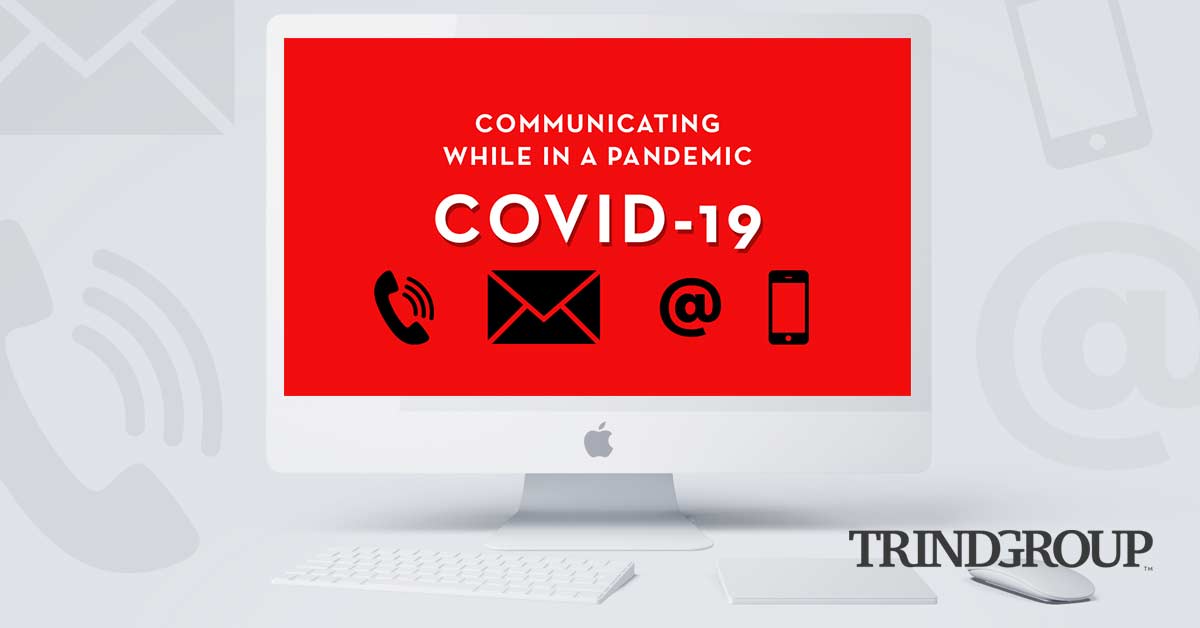There are so many ways to communicate in today’s world that it can feel like there are actually TOO many ways to communicate. Does anyone else ever get the feeling that WUPFH from “The Office” is a real thing?! In similar fashion to Season 7, Episode 9’s startup invented by loved/hated Dunder Mifflin employee Ryan Howard, we’re receiving both work and personal messages via text, email, social media, digital ads and, even more so right now, video calls, seemingly all hours of the day and night.
In typical circumstances, an employee might not bat an eye at an email from his or her boss about company updates, and a consumer might scroll right past an ad for a local restaurant or retailer. You might roll your eyes and not respond to a silly text from your dad, or you put on an extra happy face for that Instagram post, to make sure your followers and friends can tell that your life is going “great.”
Things change a bit during times of fear, anxiety and uncertainty like the global COVID-19 pandemic, which has forced both professional and casual communicators to reevaluate their messaging strategy, tone and value offers. Every day seems to change, emotions are running high, and frustrations are building in both professional and personal settings.
You might find yourself wondering how to best approach what was once a routine email or simple phone call. Will you come across too harsh or matter-of-fact in relation to what’s going on in the world? Is the person you’re trying to communicate with in the same boat as you? Are you inciting panic, overreacting, or the opposite? How often is too often to check in on your parents and siblings, to remind them to wash their hands and wear their masks at the grocery store? It’s a confusing time to know what to do with your words, both written and spoken.
As someone who plays with words, reworks their meanings and studies their audiences daily, I’ve compiled my top four recommendations for communicating during COVID-19.
- Be transparent. If you think your employees need to know a piece of information that could impact their health, safety or prosperity, tell them in a timely manner. If you’re having a hard time adjusting to working home alone, let your supervisor know. Not sure if your friend will be able to empathize with your situation? You won’t know unless you tell them. Honesty and transparency go a long way when it comes to getting your message across and allows the intended party to trust you.
- Be deliberate. Should you deliver an important message in a brief email that could be interpreted as cold and disjointed, or should you make a personal phone call? Being deliberate in how you approach messaging allows you to stay in control of said message. Remember, just because you can’t (shouldn’t, at least!) relay a message in person doesn’t mean you should hide behind an email or text message to deliver important information.
- Be human. It’s natural to feel out of sorts, even awkward, during these unprecedented circumstances. Remember that you’re not the only one trying to navigate tricky communication scenarios, and lean on others for support. And, one of the most important things to remember about being human? Humans make mistakes. It’s possible that a message you relay might not be interpreted correctly, or may not be what someone wants to hear at that time. You may have to communicate through a different channel, use more straightforward wording or (gasp!) even apologize. Which leads me to…
- Give grace. Sometimes it’s hard to know the right words to say. Everyone is muddling through right now. You may be on the giving end of an ill-received message, or on the receiving end of confusing communication. Or, most likely, both. If you are trying your best to communicate clearly and with sensitivity, give yourself grace and continue trying to disseminate your message, adjusting as you go. On the other side, if you see a message online that doesn’t seem quite right or you receive an email that rubs you the wrong way, give that communicator the same grace and understanding you would show yourself, and know they are likely doing their best and working to turn that wrong into a right.
Despite the changes we’re seeing every day, the world continues to turn and communication has become more critical than ever. Where does your messaging fall into the mix, and are you communicating with your audience in mind? I believe we as communicators, both professionally and within our personal relationships, will experience challenges, growth and, ultimately, clarity as we navigate COVID-19.

Mary Catherine Ratliff is a Senior PR and Marketing Manager who specializes in traditional public relations including media relations, and also has years of experience in social media management, content development, digital marketing and internal communication. Mary Catherine develops strategic PR and marketing plans for her clients based on their business goals, and manages the execution of those strategies day-to-day. She has worked with a wide range of B2B and B2C brands including those in marine, oil and gas, engineering, aquaculture, law, finance, manufacturing, entertainment and health/wellness industries.
Mary Catherine holds a B.A. in Public Relations with minors in business and Spanish from Auburn University.
When she’s away from her work laptop, you can find “MC” exercising, cooking, writing for fun and spending time outdoors.
MARY CATHERINE RATLIFF
Senior PR & Marketing Manager
TRINDGROUP




